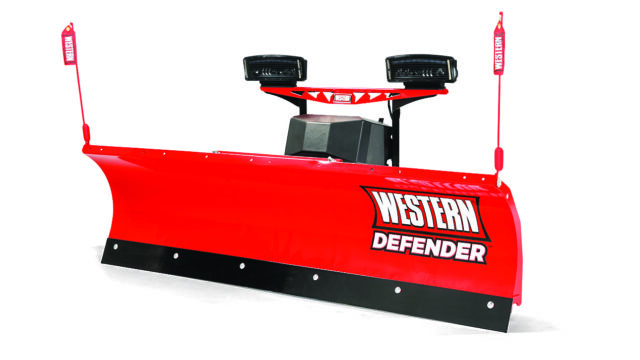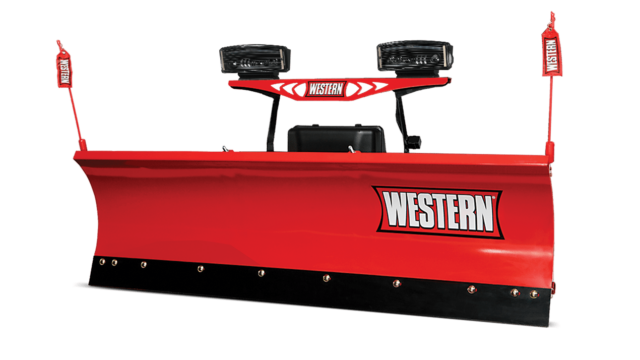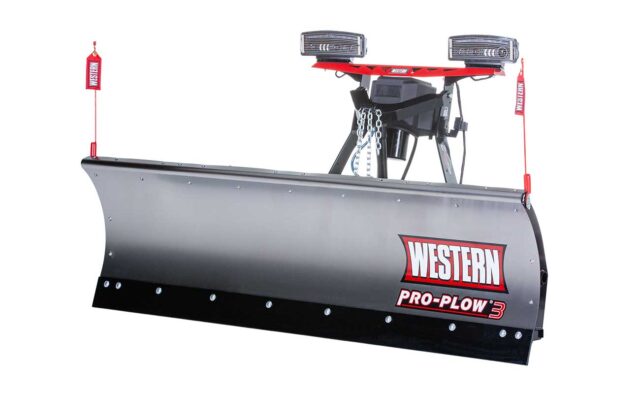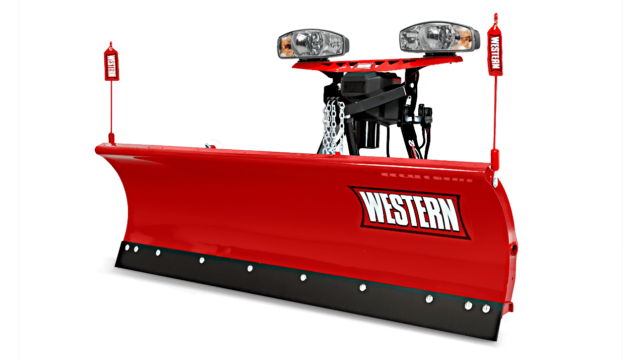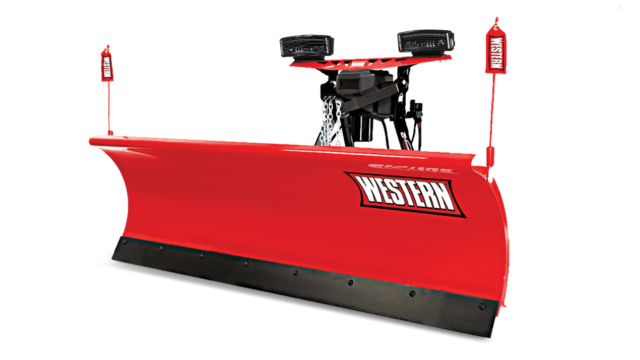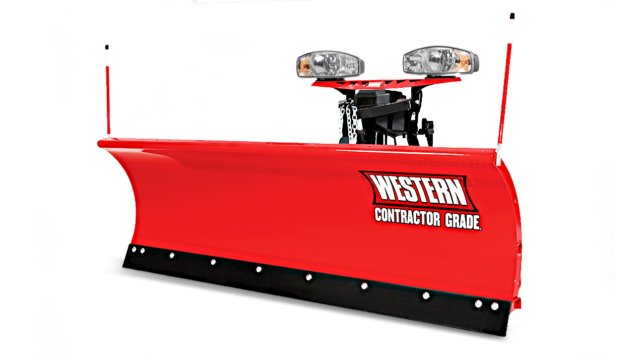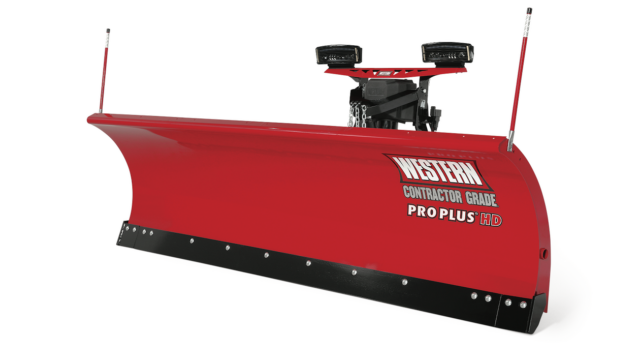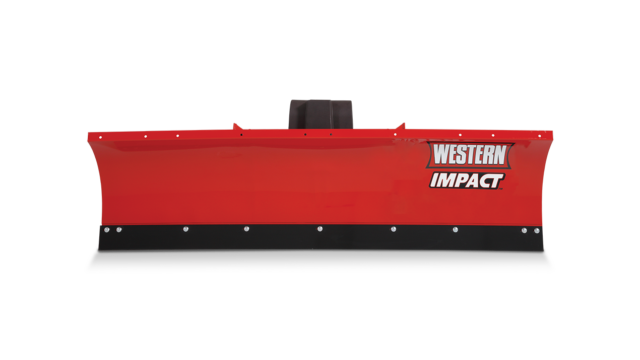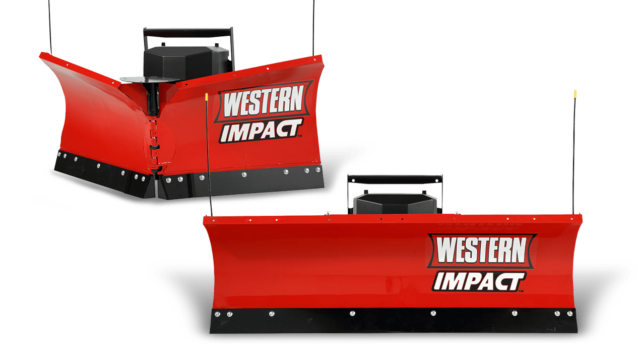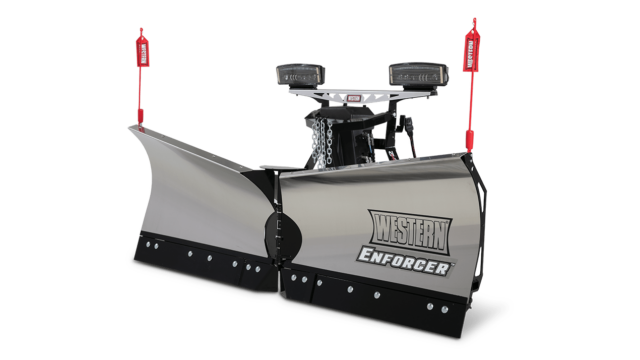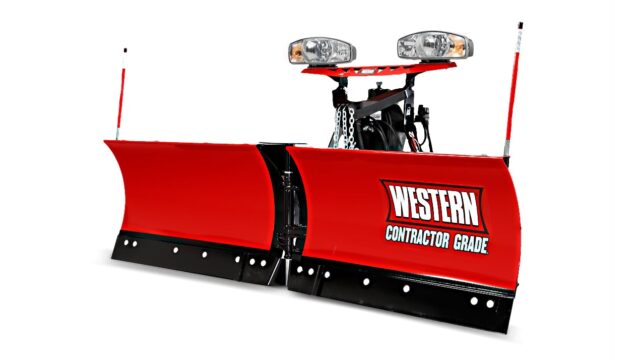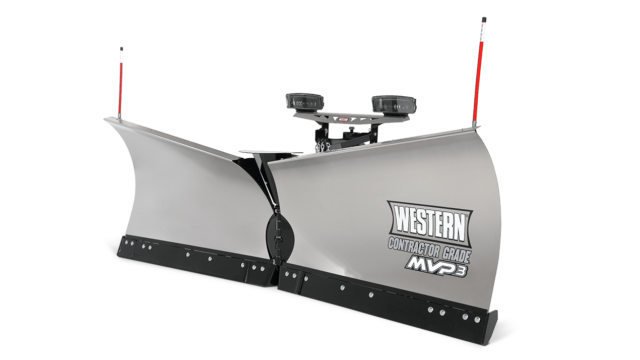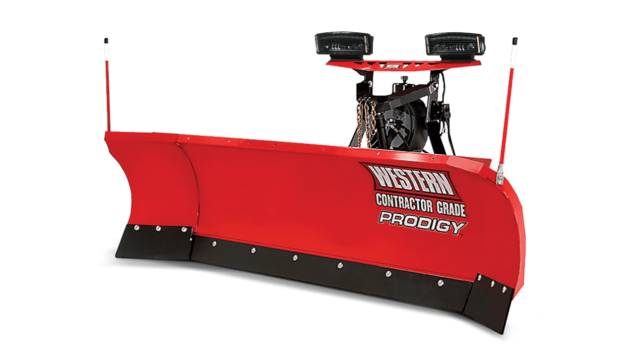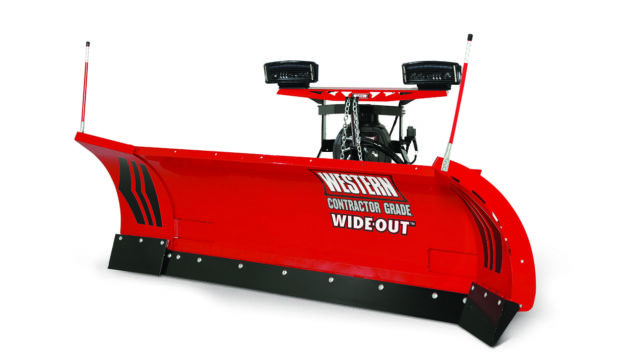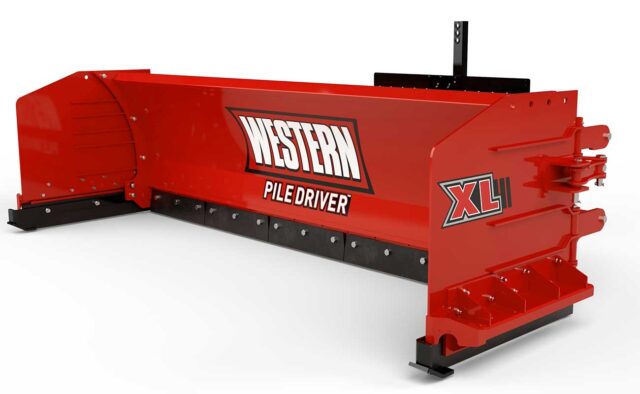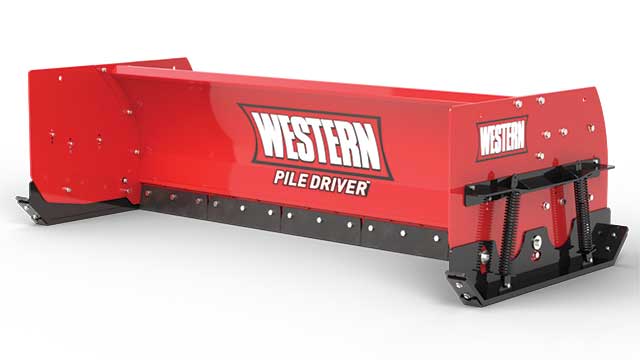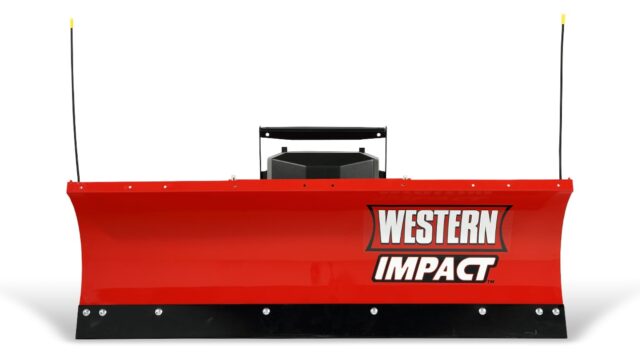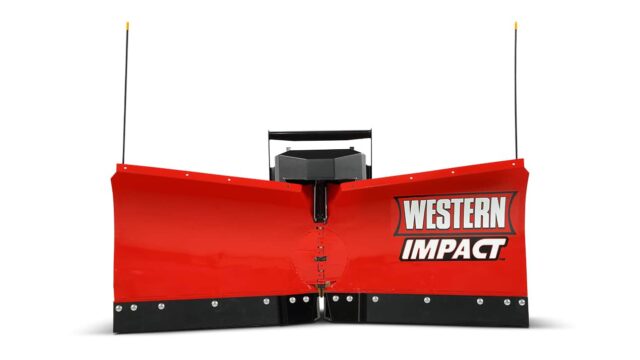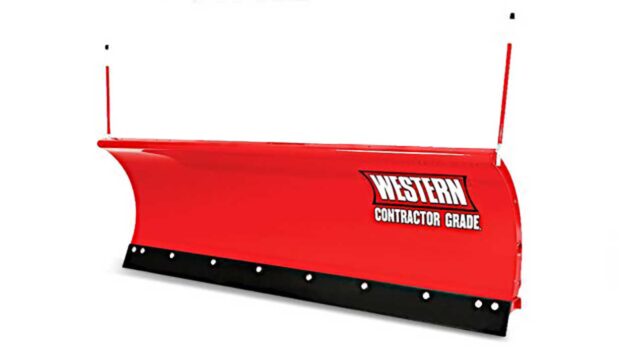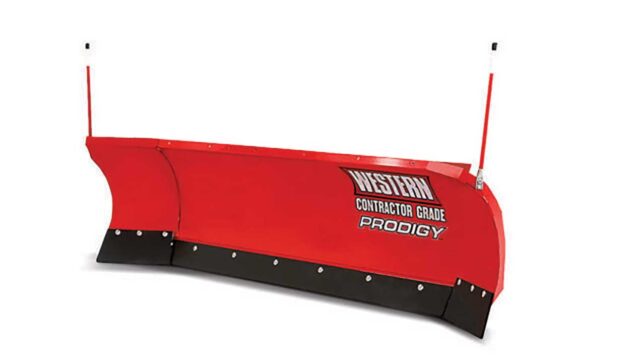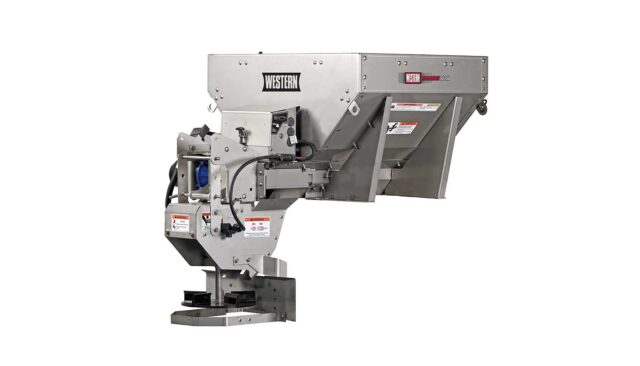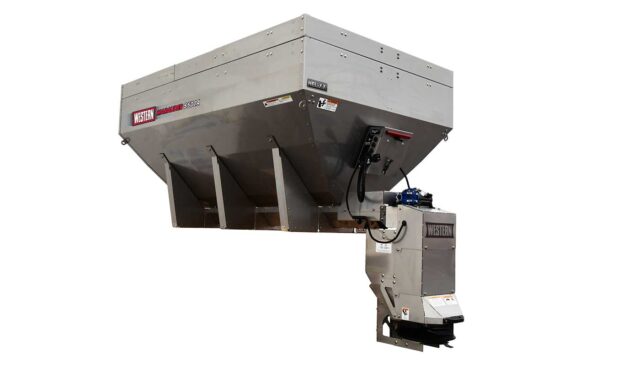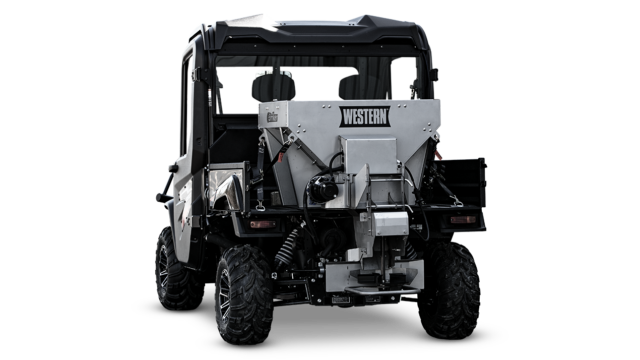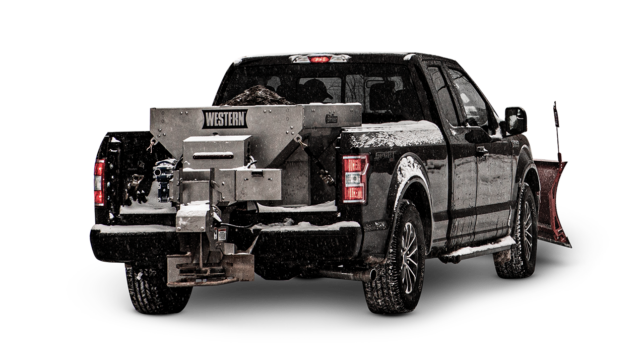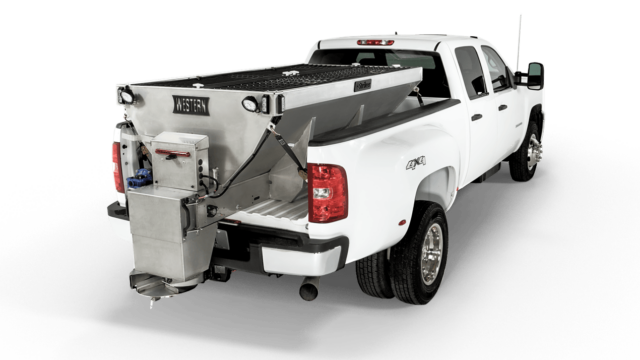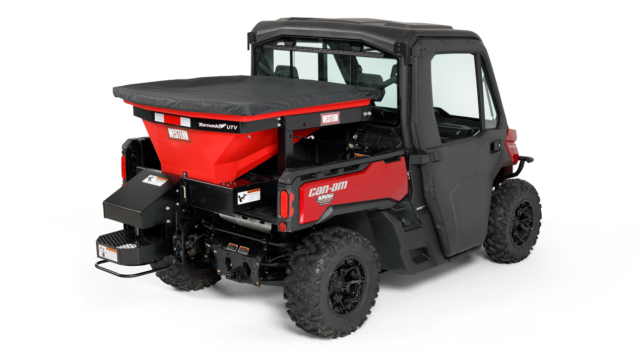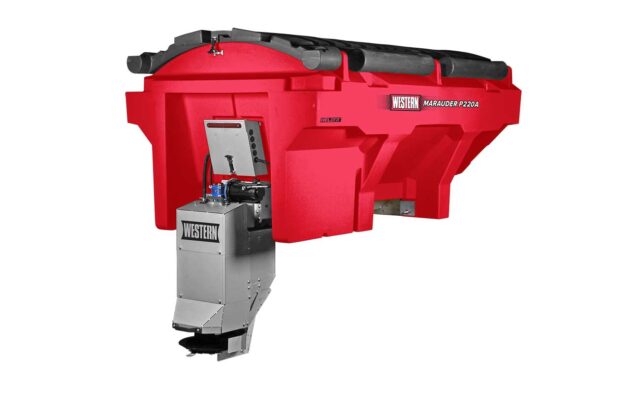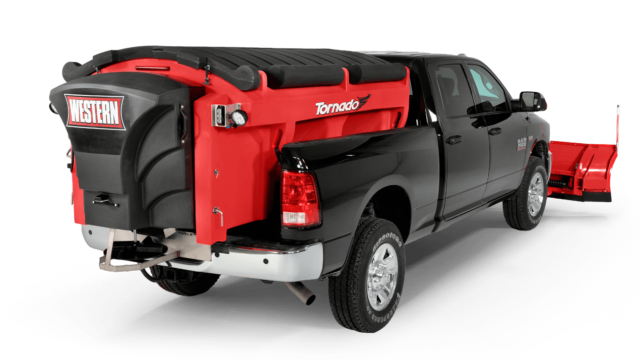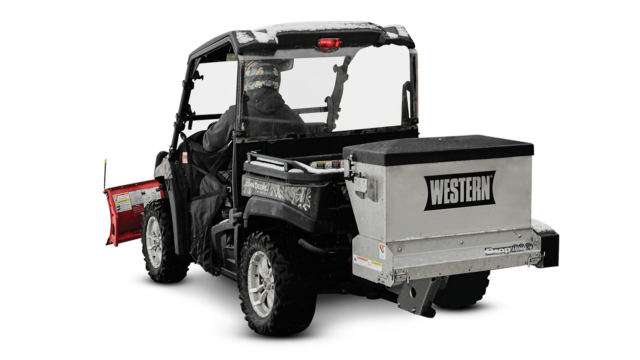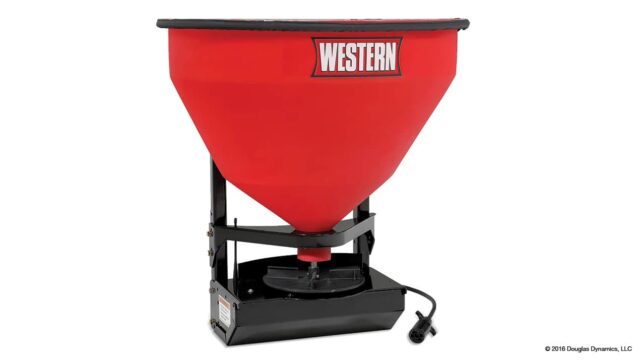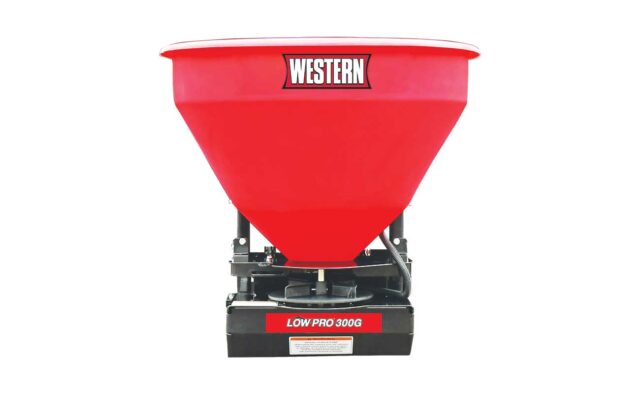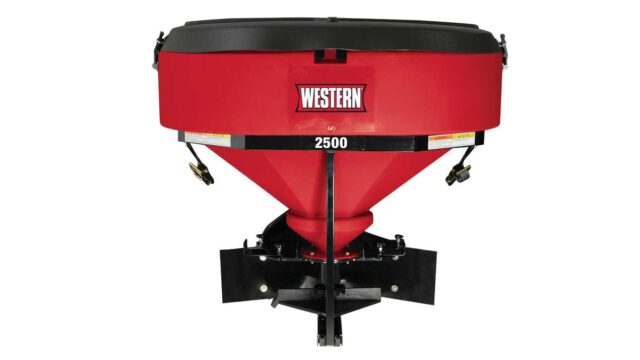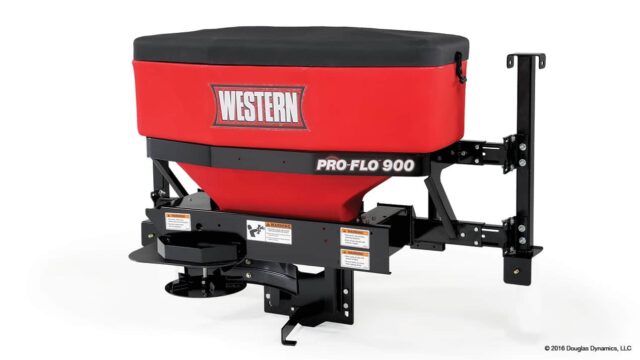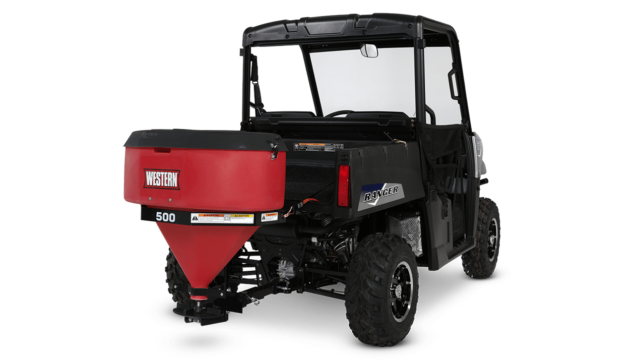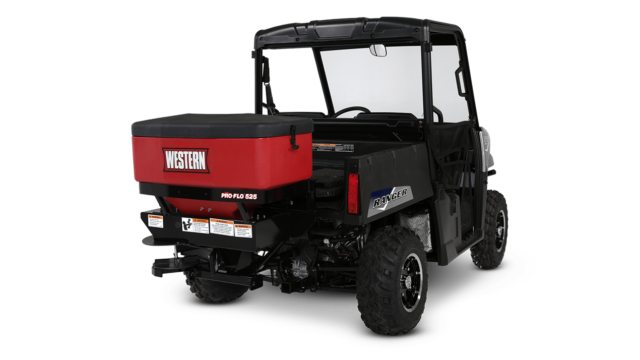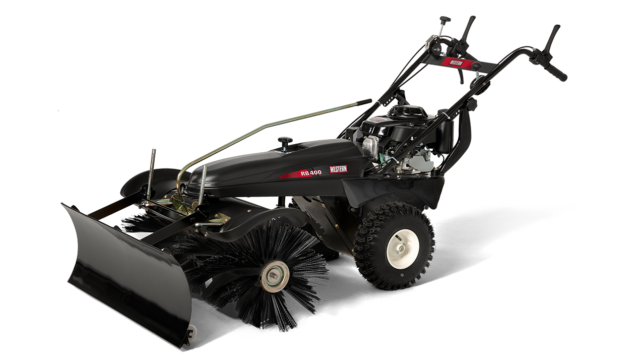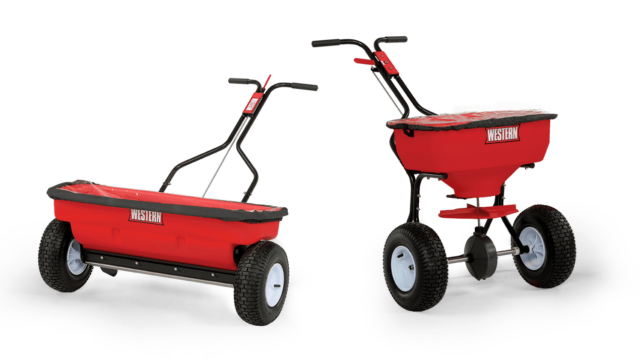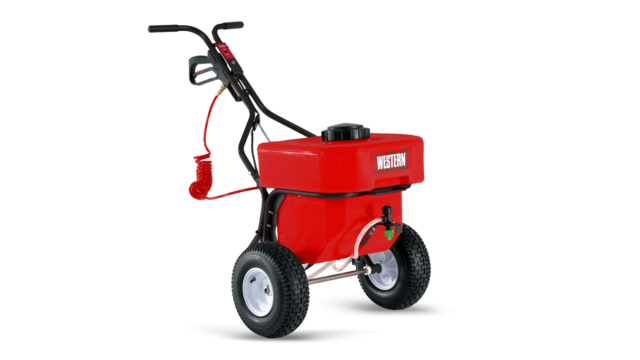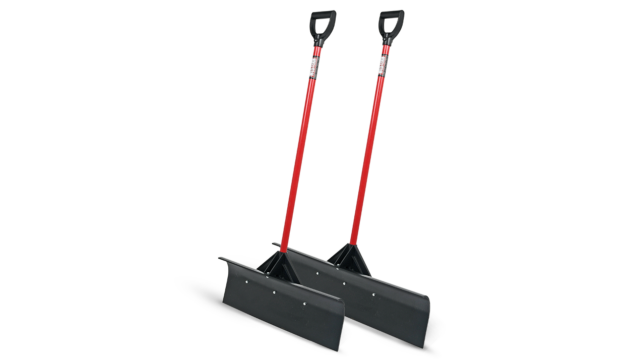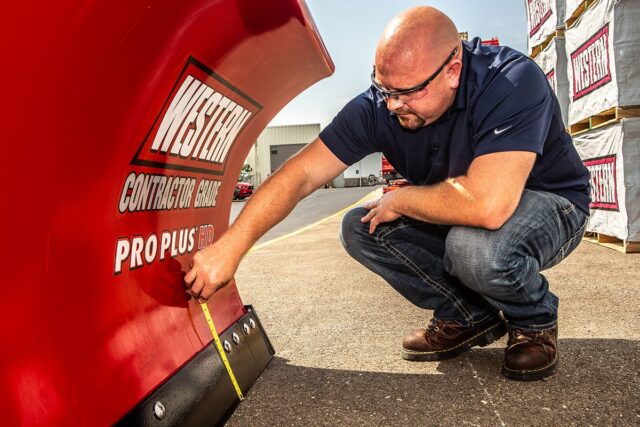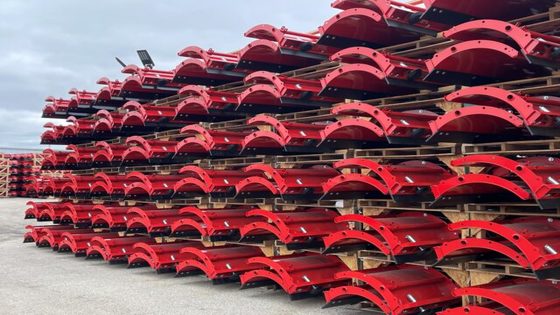Resource Articles Category: Spreader Tips
How to Calibrate Your Spreader & Understand Accurate Application Rates
Created March 29, 2023

It’s important to get to know your spreader before you start your salting journey. There are lots of variables to test and play with to find the perfect setting for your preferred material and distinct weather conditions
Why Should You Calibrate?
In order to price your services correctly, you need to know how much material you are using. On average, we put down about 3-5 times more salt than needed because we are just guessing. Adding too much salt will not melt ice any faster and even causes more issues. Over salting can cause damage to surrounding landscape, like flowers and grass, and when used around entryways, can cause damage to door frames or flooring when tracked inside. Save material and calibrate your spreader at the beginning of the season to set yourself up for success.

Test & Understand Your Equipment
To begin the calibration process, you need to experiment and test your equipment. If you do this once at the beginning of the season, you can apply the results to other spreaders in your fleet. Calibration is figuring out the pounds per second your chain conveyor system is distributing.
One Way to Calculate Application Rate
To begin, with the spinner detached, run the spreader for 1 minute at each setting. Dump the material into a tub or storage container.

Then, weigh the container to determine how much salt came out at each setting. For example, if the material weighed 100lbs, then the calculation would be 100/60 = 1.6 lbs/s. If you test and weigh all the settings, then you know the flow rate for each setting which can be used in the formula below to determine application rate.
User Variables
- (X) Spread Patter Width = ____ft (8 to 40ft)
- (Y) Vehicle Speed = ____mph
- (Z) Chain Conveyor Flow = ____lbs/s (0.5 to 3.9 lbs/s)
Conversion Factors
- (A) Distance = 5280 SqFt/Mile
- (B) Time = 0.01667 hr/min
- (C) Area = 43560 SqFt/Acre
- (D) Time = 60 s/min
Calculations
- (E) Spread Coverage = X * Y * A * B = ____ SqFt/Min
- (F) Spread Coverage = C / E = ____ min/Acre
- Spread Coverage Rate = Z * D * F = ____ Lb/Acre
Depending on results, create a cab card that reflects the correct material width, material flow, and vehicle speed based on different weather conditions.
Here is an example of suggested settings for salt application:

There Isn’t One Single Solution
Storms are unpredictable so there isn’t one single solution. Calibrate and experiment with different settings on your hopper before the season starts to be prepared when the snow starts falling.
Tip: The setting on your hopper will vary depending on the type of material you use. For salt, you just want enough to melt the ice. For sand or dirt, you need enough material to cover the surface and create a layer over the ice for traction.
Advantages of Pre-wet Salt
Different de-icing materials can be better for certain situations. Using pre-wet salt has several benefits that allow it to work better and faster in extreme cold temperatures. Pre-wetting salt “activates” the material to accelerate ice melting and the pre-wet granules bounce less when hitting the pavement for greater control and less waste. Studies have also proven that application rates can be reduced by up to 30% when pre-wetting salt with liquids.
Find Local Resources
Find helpful guidance and recommendations for your state from the Department of Transportation and local organizations. Wisconsin Salt Wise is a great place to start. They have information on winter maintenance strategies and an application calculator to determine recommended application rates.
You may be interested in these related articles:
3 Preventative Measures to Reduce Material Bridging & Spreader Damage
Created December 15, 2020
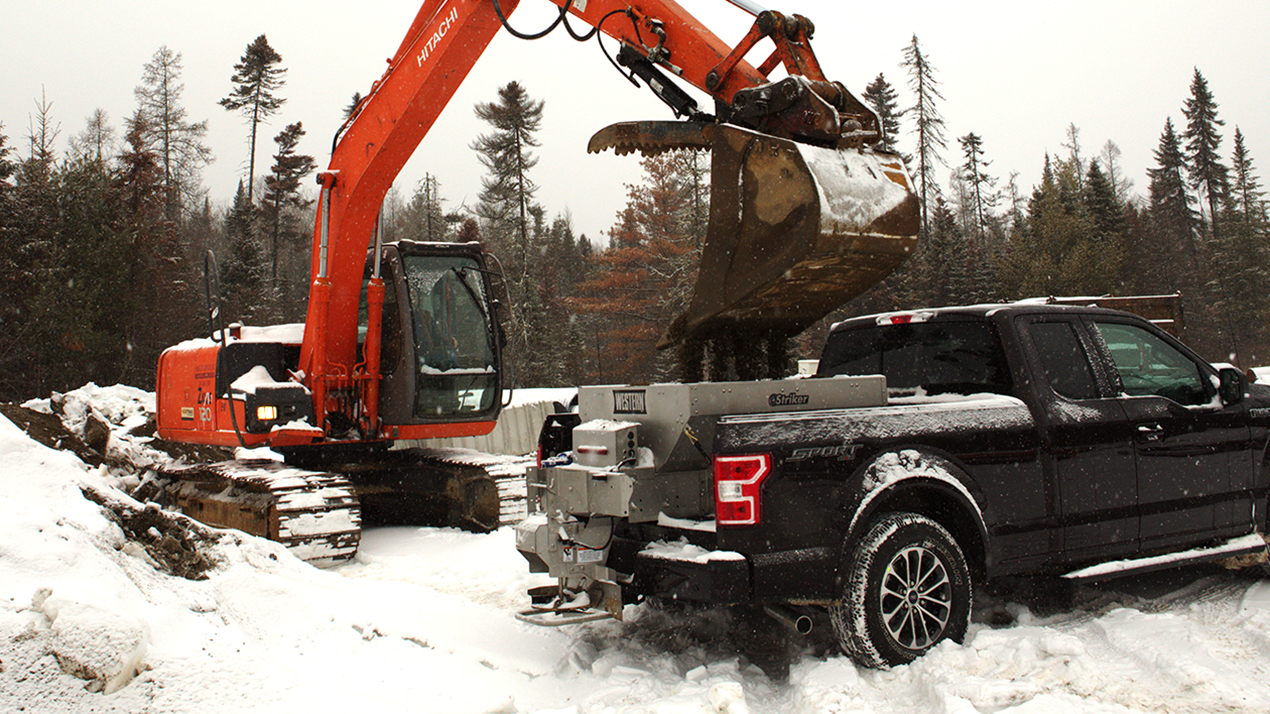
When snow is in the forecast, your operation is relied on to keep businesses and homeowner associations clear and accessible. In these situations, time is of the essence. Salting or sanding is likely a huge part of the winter services you provide to your customers—both before and during the storm. You don’t have time to deal with your salt, sand, or other material bridging and clogging in your spreader—messing with your ability to delivery anti-icing services.
#1: Wet De-Icing Material Can Cause Clogging
When you’re using salt and sand (or a combination) in freezing temperatures to combat snow and ice, any moisture contained within the de-icing material can freeze inside the hopper. When this happens, the material is unable to flow freely through the material delivery system. Estimating how much material you’ll need for the season and properly storing it is all about planning ahead.
To avoid moisture, store your de-icing material in stockpiles on waterproof pads so moisture doesn’t seep into the pile from the ground. The stockpile should be inside or covered by a waterproof material, such as a tarp. High humidity in the summer months should also be watched. When humidity is above 75%, salt and sand can absorb the moisture from the air.
To protect your salt (or sand) pile from runoff or melting snow, use sand bags or a trench around the pad your pile is resting on. Choosing a location for your pile that is over 50 feet away from major waterways will also protect the local environment and limit potential contamination. Check with your local government before constructing a large salt storage facility and be prepared to meet facility requirements or the DNR can fine you.
When looking for a new salt spreader, look for features that limit the elements from getting into the hopper and ensure the de-icing material is funneled directly towards the material delivery system. These features can include a weather-resistant cover, corrosion-resistant hopper, and an optimized material delivery system.
#2: Settling Material Becomes Hard-Packed & Difficult to Spread
When you fill your spreader with material, make sure you are ready to apply salt or sand. If you allow the material to stay in the hopper too long, the material’s own weight can pack it down making it difficult to spread. It might seem like filling the hopper as full as possible is the most efficient way to maximize salting jobs—but the added weight can pack down the de-icing material and increase the risk of bridging. If your material freezes and bridges, it will cost you time in the long run.
The design of the hopper, as well as the hopper material, can assist the salt, sand, or combination from settling. For larger capacity spreaders, the industry has been favoring hoppers made out of polyethylene (poly) because the material is naturally smooth and slippery. This aids the flow of salt/sand to the material delivery system for application.
Stainless steel hoppers are also readily available and do an excellent job applying salt and sand. They use the shape of the hopper and vibrators to ensure the material moves easily down to the material delivery system.
#3: Ensure Your Material is Coarse Enough
If your de-icing material is too fine, it will harden faster and clog up your spreader. Ensure that you are using the correct de-icing material for your spreader equipment. This includes coarse rock salt and coarse sand meant for creating traction.
One way to ensure your ice control equipment performs correctly when a winter storm is bearing down on you, is to ensure your de-icing material is stored and handled properly. This will greatly reduce the chance of salt and sand bridging that slow you down. If you want to ensure you have the correct spreader type for the material you apply, check out the WESTERN® spreader selector tool.
Estimating Spreader De-icing Material Is All About Planning Ahead
Created July 30, 2020
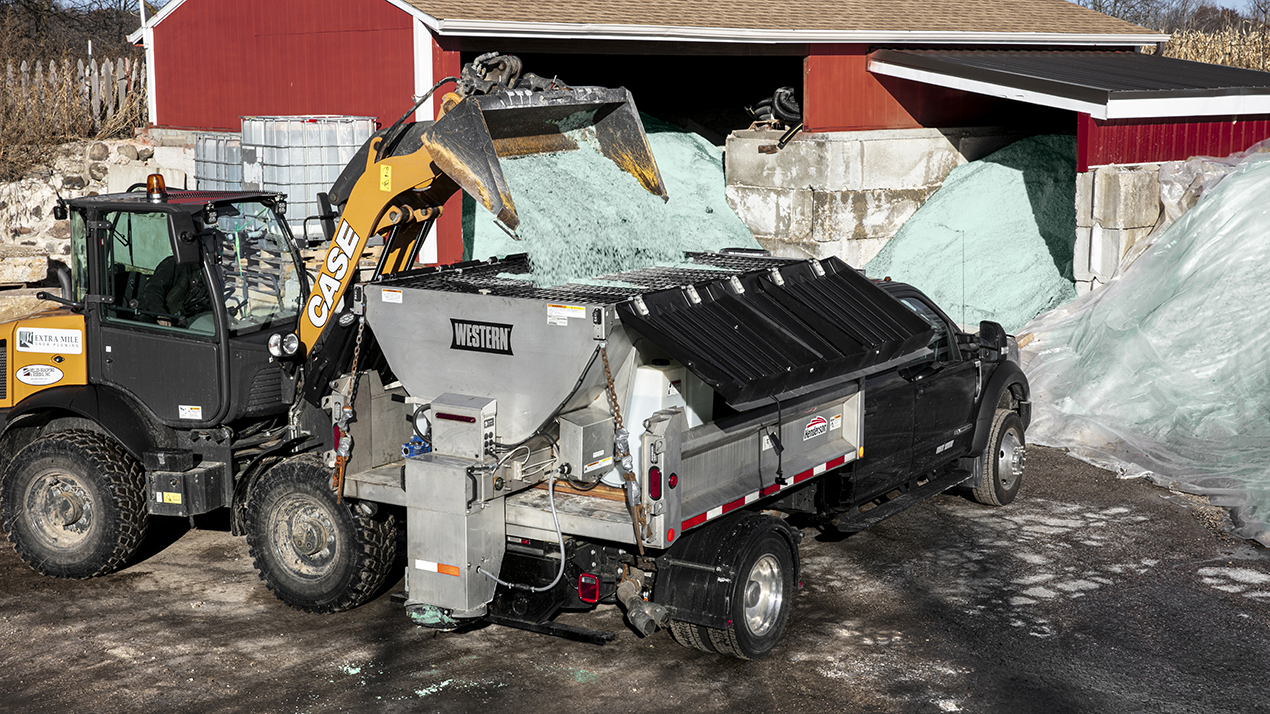
Anyone in the snow and ice industry knows that summer is the best time to prepare for the winter season ahead. Although equipment maintenance may be your first priority, don’t underestimate the power of pre-placing your spreader de-icing material order. Set yourself up for success and ensure you have enough salt for the upcoming season by planning ahead.
Salt Sourcing
The salt game is really just that, a game. It’s survival of the fittest, the smartest and most savvy win. If you don’t buy it, someone else will—making it more expensive and harder to find in-season. Depending on how close you are to the salt source, costs may vary because it’s all dependent on transportation. Having multiple sources may help you in a dire need situation.
Should I Use Bagged or Bulk Salt?
You’ll need to determine if it makes sense to purchase bagged salt, bulk salt or a mix. Sidewalk crews are more prone to using bagged salt because it’s easy to refill, regulate and keep clean. Companies with less than 10 employees using tailgate and walk-behind spreaders may also decide that it makes sense to stick with bagged salt, depending on the total amount needed.
Once you need more than 48 bags of salt or you’re using a hopper spreader, it’s more cost effective to buy in bulk. This requires a facility to store the material and a skid-steer or wheel loader to move it. Salt needs to be stored in above freezing temperatures, free from moisture or in a sealed container if possible. Avoid keeping it on the garage floor where melting snow and ice can come in contact with it.
If you have enough storage, it doesn’t hurt to buy extra to be safe. De-icing material is cheaper when buying in bulk and more available at pre-season, becoming less accessible as the season continues. Worst case scenario, you sell it to other contractor’s in-season and make a profit.
Some companies may want a combination of bagged and bulk material to have a variety available for their client’s unique needs. Pet and environmentally friendly material could help protect thousands of dollars in landscape costs, but also comes at a premium cost. These types of circumstances make sense to use bagged material to keep it regulated and clean from outside elements.
Calculating Enough Material for the Upcoming Season
In order to get a ballpark idea of how much material you’ll need, it’s important to know the type of material you’re spreading and what your typical account looks like. Most contractors can get a rough estimate based off how much was needed the year prior. Otherwise, you can calculate a more accurate amount with simple math—multiply the square footage of your typical account size by 0.01 pounds and then multiply that by how many accounts you have. This will give you the average amount of rock salt that is suggested for one snowfall. Lastly, multiply that by how many ice events you have in a year to get a fairly good estimate (on average you can assume 30 ice events per year).
Bonus Tip: If you have a spreader with pre-wet capabilities to activate the salt, it could reduce the amount of material needed—among numerous other benefits.
Salt Shortages Can be Reduced by Planning Ahead
Don’t believe the myth that there is a salt shortage—the only shortage is in available transportation to your geographic location. If the supply chain is disrupted, it can delay shipments and/or potentially increase costs due to demand.
Ultimately, if you plan ahead and stock up early on salt you shouldn’t have to worry about it once the first snowfall hits. It’s always better to be safe than sorry in the snow and ice industry.
